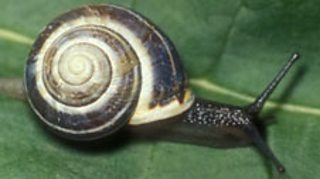That's because the focus of the research is a common little garden creature called the .

The Open University's , is one of the largest studies of its kind ever to have been undertaken.
Starting this week, it will run for six months and involve people from all over Europe.
Hit the snail trail
Banded snails are easy to find and safe to handle. To take part in the study, all you have to do is search for the snails in your garden, school yard, street, woodland or park and keep a note of their numbers and appearance.
With shell colour providing camouflage and affecting how sensitive a snail is to temperature, scientists believe the research could show how the creatures have evolved in the past 40 years to reflect changes in climate and their predators.
To add your observations and help the scientists with their research, you can register now with . The website also has lots of useful information about how to identify banded snails, where and when to look for them and what to record.
Want to find out more?
- The has information about all sorts of molluscs.
- Explore evolution with expert articles, experiments and online discussion.
